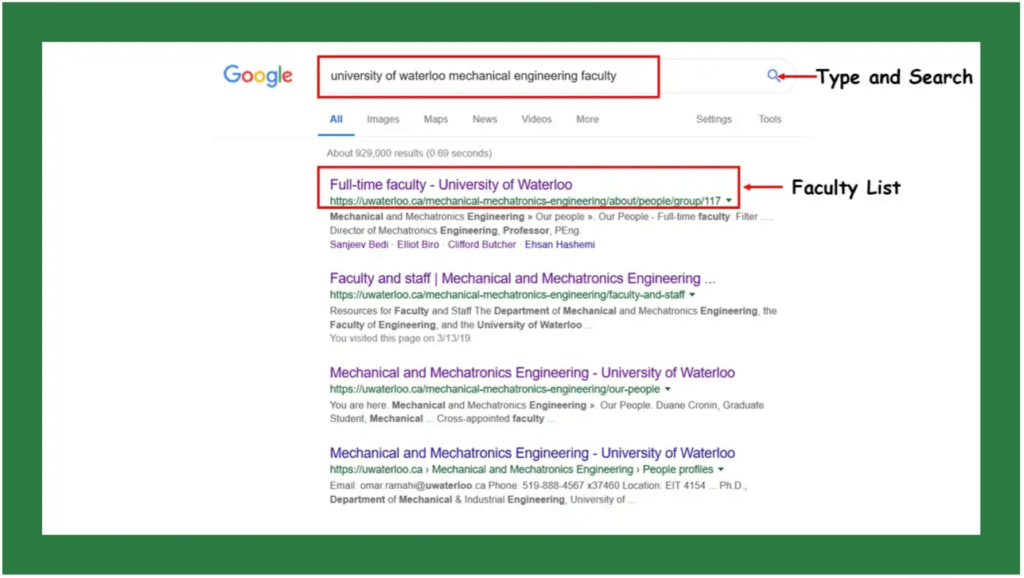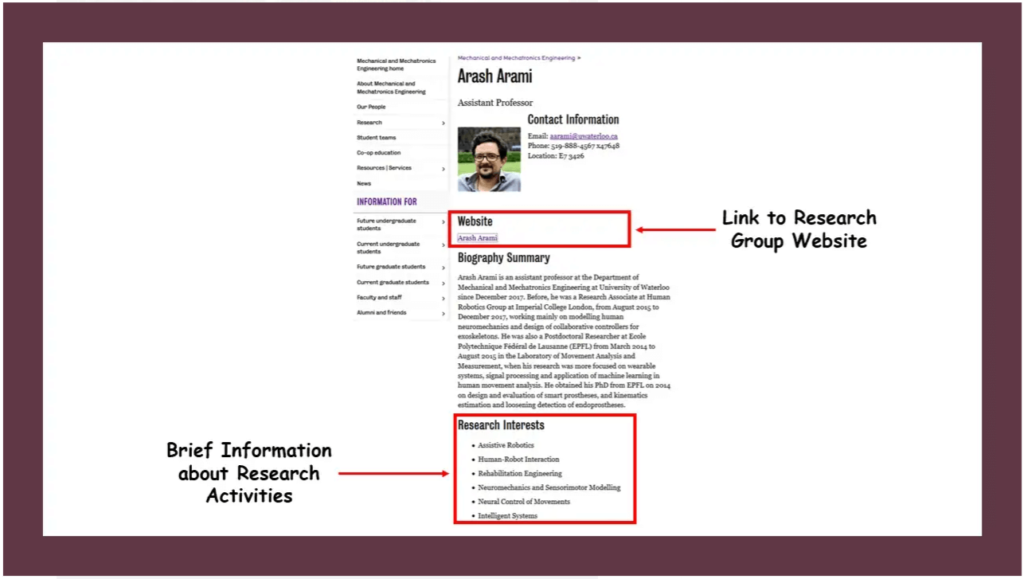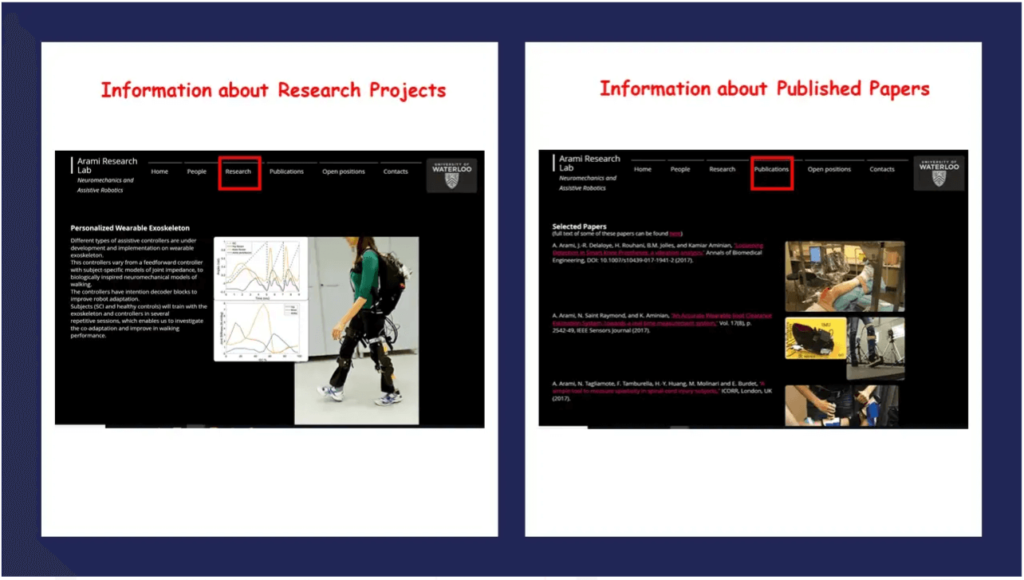The process of finding a supervisor is very critical for getting admission with funding for your PhD program. Though in most of the schools the admission committee approve your application first, you should still look for professor who has opening his/her research group. The admission committee always give priority to those applicants who have contacted faculty advisors prior to their application. However, in many schools, you can get central admission with teaching assistantship (TA) for one year, and in the mean time you have to find a supervisor who will supervise you for your PhD. In some cases, professor directly hire student as a research assistant (RA), and it is very crucial that you express your interest by emailing to that professor before you submit your application. The professor might take your interview on Skype and then invite you to submit a formal application. On the other hand, the professor might ask you to submit formal application first. Once the admission committee approves it, then s/he will review your application for admission and funding. Regardless of what the policy is, you should always try to find a potential supervisor before you submit your application for PhD.
Before you start:
You should always ask your self the following questions, before you start finding any supervisor from any particular university:
- Do you meet the admission requirements set by the department or graduate school?
- What area of research do you want to pursue? Are there professors doing research in the are of interest to you?
Finding potential PhD supervisors:
Suppose you want to apply to University of Waterloo for your PhD. You can visit the website of University of Waterloo, explore the specific department’s page and then explore the faculty list. Or you can just type e.g. “University of Waterloo mechanical engineering faculty” and go to the faculty site and explore as shown below:

Once you click the link of the Full-time faculty, it will directly take you to the faculty page:

The list of the faculty is usually organized by the rank of the faculty and area of research. However, each individual school has their own policy to organize the list of the faculty. Regardless of the organization, you can always extract the info about their bio and their research activities from the list. Here, for example, we are picking Professor Arash Arami as an example.

Finding information about the Research Group:
Now, if you visit his site as listed above, you will find the details about the research activities and other necessary information such as openings, publications etc. of his group.

Usually, professor list the open positions in his/her research group under the open positions or current openings tab. So, if you find any openings, read the information carefully whether the position is open for PhD or MS students. What are the requirements that you need to meet for any particular position. Every professor demands a certain set of skills for a particular position e.g. a professor working on developing ML algorithm expects that you will have good programming skills in Python or MATLAB to work as a RA. If you have relevant skills then it is good. If not then please start developing so.
Now, to have an overall idea about the research activities of the professor, you should visit the “research” and “publication” tab as well.

You should get detail information about the research activities and published papers from the website. You should carefully look at the timeline of the research projects and the grant that professor received (if mentioned). If you find that a research project has started 6 months ago, then it is highly likely that s/he might have a potential opening for this project.
Sometimes, the research group website does not update all the published papers. You might not have any idea about the impact of the work such as the number of citations. To know this sort of information you should refer to the google scholar profile of the professor.

Explore the google scholar profile of your potential PhD Supervisor:
From the google scholar profile, you can have an overall idea about the impact of the research work of any researcher. For example, how many researchers have cited the published work? What is the h-index number? How many papers got published in each year? When was the last paper published etc.? You can always view the papers by number of citations or by year which will give you a general idea about the impact of his/her work. If a professor has recently published numbers of papers, then it means s/he is an active researcher.
The h-index number can also be used as a metric for gauging and comparing overall scientific productivity of individual scientists. If one has an h-index of 20, then it means that s/he has 20 papers with at least 20 citations. It also means that s/he is doing pretty well with research. Professor Joerge E. Hirsch from University of California, San Diego mentioned that after 20 years of research, and h index of 20 is good, 40 is outstanding, and 60 is truly exceptional.
Another way to find about the opening is to look at the alumni and current members list. If you see that a number of students has recently graduated from the research group, mostly the group might have a opening or two. Also, look at the working timeline of the active members, it will give you an idea when the current members are about to graduate. If the research group is active, then it will always look for new members based upon the availability of funding.
Contact a faculty member:
So, once you find out that a professor is active in research and has openings in his/her research group, you should always send him/her an email expressing your interest. Be sure to tailor your email and message to each faculty member. Your goal is to stand out and make a great first impression. For more details about the email etiquette and format you can refer to these articles written by the expert team members of GradBunker. Here are some tips for writing an effective email to professor:
- Use formal salutations — Professor/Dr. (last name) and close with “Yours sincerely” followed by your full name and contact information.
- Attach your academic CV and current transcripts. Some might argue to insert a Dropbox link rather than attaching documents. Grad Bunker does not suggest that as someone will be reluctant to click on any link received from an unknown person.
- Tell why you are interested in graduate studies, and do research in particular area.
Finding a potential supervisor never seems easy, but it is not hard either. If you can find a supervisor who would like to be your future academic supervisor, there is a high chance your application will smoothly make through all the barriers set by the admission committee. Thus, you will most probably end up with getting funded admission.
Disclaimer: No A.I. was used to generate any portion of this write up.


An worthy piece for reading. Thanks!
Thanks for your comment. Please share if you like our article.
Pingback: How to choose a Ph.D. advisor?
Pingback: 5 Common Mistakes to Avoid during PhD Application!
Pingback: How to Communicate With Professors for Funding? - gradbunker.com